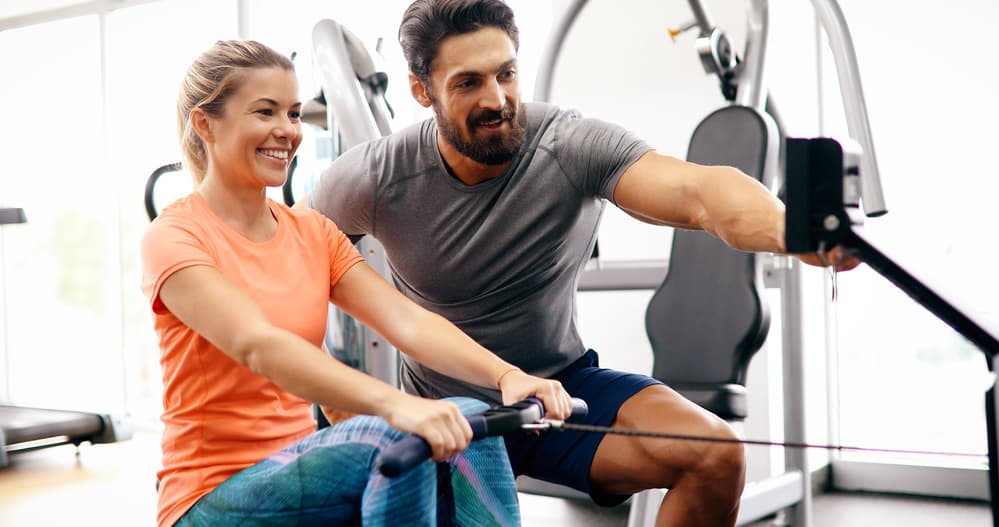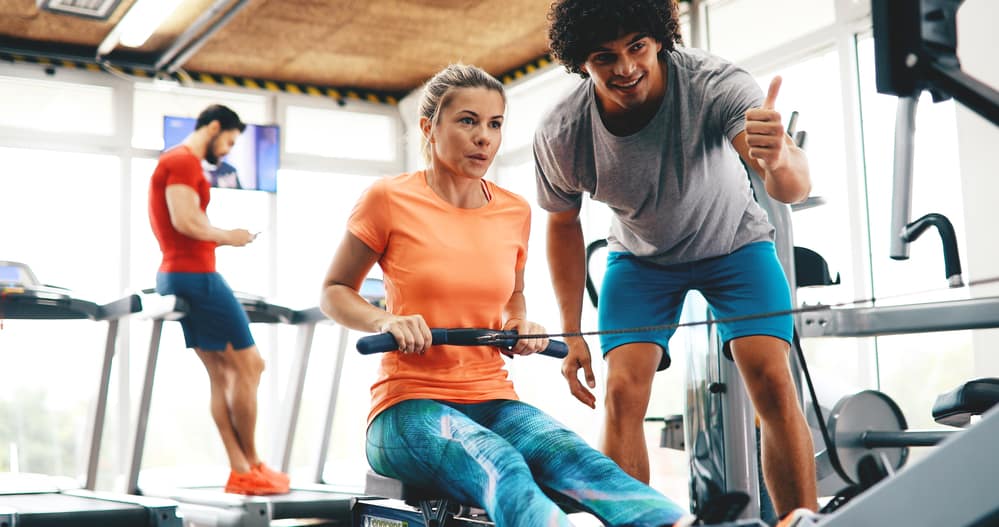Are you new to rowing? Using the best rowing machine for beginners should help you get used to this exercise. But what makes a rower ideal for a newbie?
Generally, a quality indoor rower with magnetic resistance is best for beginners. This type is more lightweight, compact, quiet, low maintenance and reasonably priced than other similar machines.
But the truth is, any rower, including those with advanced features, is beginner-friendly.
That’s because indoor rowing machines adjust to their users.
You can put less or more rowing effort into the machine based on your fitness level.
And so, the choice boils down to your preferences as a first-time rower.
Let’s make it easy to find the perfect exercise machine for you.
Here are the essential things you should know, look for and consider.
What are the Best Features of a Beginner Rowing Machine?
Currently, there’s no such thing as a beginner rowing machine.
But there are machine features that match well with the needs of most newbies.
Check these out and see which ones should be on your priority list.
1. Full-body rowing motion
The best rowing machines for beginners can exercise the upper and lower body. This combined movement optimises your caloric burn and muscle toning.
Most rower models have this feature except for some hydraulic machines.
Budget hydraulic rowers usually lack a sliding seat that moves your legs back and forth. So, skip these if possible.
If you want to get the most of the weight loss and cardio benefits, moving large muscles, like your legs, rowing is best.
The more muscles you move, the higher the caloric expenditure and the faster the workout results.
2. User-friendly console
Consoles are more complicated in expensive rowers. And first-timers usually do not need to track a lot of rowing workout data.
Time, calorie count and stroke rate are the most essential. The display should be easy-to-read, too.
It should not be a problem finding this kind of performance monitor even in budget machines.
But if you can, do get a mid-range machine that syncs with a heart rate monitor or your favourite fitness app.

3. Variable resistance levels
I believe all rowing models have adjustable resistance options.
Some more expensive units allow higher resistance levels than others, though.
But for beginners, I think getting a magnetic rower with pre-set resistance levels is the way to go.
With this type, you can switch to a higher resistance by turning a dial or pressing a button.
It’s a lot quicker than refilling the tank of a water rowing machine, for example.
Also, pre-set options let you consistently train at a specific resistance level until you’re ready to progress.
It will be easier for you as a beginner to track fitness developments that way.
4. Low maintenance
Rowing machines are not that hard to clean and maintain.
But if you want the best rowing machine for beginners that is also low maintenance, go for a magnetic type.
Then, avoid getting an air rower. This type has several exposed parts that are prone to dust build-up.
And without regular cleaning, it can start performing poorly sooner than expected.
Getting a heavy-duty rower is also one way of controlling maintenance costs. So, if possible, invest in a mid-range machine at least.
Like any fitness equipment, you’ll have to spend more to get a rowing machine that lasts longer.
Higher quality machines are also better if you plan to use your rower for extended or intense workouts later.
5. Affordable
This feature perhaps is the most important for all rowing machine beginners.
And generally, it’s not that practical for a newbie to buy the most expensive rower.
Some high-end machines may have features you do not need. Also, you won’t be making the most of your investment if you are a casual rower.
Moreover, most beginners are hesitant to spend on an expensive unit that they might not use for a long time.
So, I suggest identifying your fitness needs first. Then, match them with the rower options that fit your budget.
The safest choice would probably be a mid-priced rowing machine.
This one should have quality construction and a good balance of features that appeal to most beginners.

What are Some Beginner-Friendly Rowing Machine Models?
Now that we know what features to look for, it should be easy for you to find your ideal rowing machine.
But to help you further, here are my suggested rower models for different types of beginners.
Lifespan Fitness Rower-445 for Total Beginners
Lifespan Fitness is perhaps one of the reliable brands that offer the best rowing machines for beginners at varying price points.
And currently, the Rower-445 is their most affordable, which is perfect for beginners on a budget.
Despite its low cost, this magnetic rowing machine is quiet, with 16 levels of resistance.
Unlike most entry-level models, the Rower-445 is robust and comfortable to use.
It has a contoured seat, wide foot pedals and a strong rowing cord. The screen display is easy to read, too.
If you have a small gym space, its foldable design and transport wheels should make it easy to stash it in a corner.
Lifespan Fitness Rower-760 for Budding Rowing Enthusiasts
Most people would steer clear of water rowers because of their price range.
But if you’re a beginner with a little extra to spend, this rower type is worth the investment.
And not all water rowers are expensive. Lifespan’s Rower-760, for example, is a mid-range model that gives that coveted natural rowing feel and sound.
It boasts a striking oak wooden frame, too.
I especially like this model because it can grow with the user, meaning you can still use it even if you’re a junior or experienced rower.
There are no pre-set resistance settings, so you can row as slow or fast as you like.
It’s the best rowing machine for beginners who are into progressive training.
This unit is foldable into a compact size so you don’t have to worry about ceiling height for vertical storage.
Concept 2 Rower Model D for Fitness Fanatics
If you are a first-time rowing machine user but a regular gym-goer, then it’s best to get a more advanced model.
For instance, the Concept 2 Rower Model D suits frequent heavy training.
Its performance monitor is more detailed, too – perfect for a more comprehensive workout tracking.
You can even use its Bluetooth connectivity feature to exercise with a heart monitor or your preferred fitness device or app.
What I appreciate the most about this unit is its flywheel design. Air rowers are notorious noisemakers and can be distracting.
But Concept 2 designed Model D with a specialised flywheel for noise reduction and smooth rowing sessions.
Its built-in damper also makes airflow adjustment quick and easy.
I also like that you can separate the unit into two parts for easy storage.

Conclusion
Rowers may look like intimidating pieces of exercise equipment.
But with the correct resistance, design and features, they can be one of the best machines for beginners to use.
Keep in mind that not all beginners are the same.
So, when choosing your machine, match its capabilities with your needs and preferences. Consider your budget, too.
Also, spend time reading customer reviews.
And check out my rowing machine buying guide next to learn more about its essential features.
Related Questions
1. How much should I pay for a good rowing machine?
A quality rower costs around $1000 to $1900. This mid-range category has machine options with a robust frame, warranty and feel. Also, this type often has balanced features that suit most fitness capacities or needs. Aside from price, I suggest considering your preferred rowing machine type and resistance mechanism, too.
2. How long should a beginner use the rowing machine?
Exercise duration depends on your fitness capacity. But generally, moderate rowing for 15 to 20 minutes daily is a good starter. This routine can build up your stamina, agility and mental resilience. When ready, modify it to a 30-minute rowing session five days a week. This upgraded workout time is better for weight loss.
- Foldable vs Traditional Reformers: Which One’s Right for You? - 2 July 2025
- Elliptical Cross Trainer vs Exercise Bike: Which is Better? - 24 June 2025
- How Do the Different Massage Gun Attachments Work? - 23 June 2025
